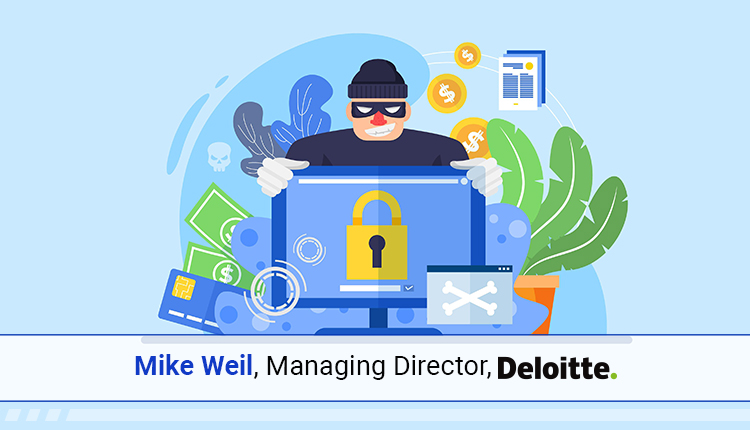Imagine receiving a videoconference call from your company’s CFO. During the call, the CFO—appearing on camera—requests that you expedite a delayed $10 million payment to a vendor whose invoice has seemingly been misplaced. Trusting the CFO’s personal request, you process the payment, only to later discover that the vendor doesn’t exist and the real CFO knows nothing about the call.
In this imagined example, you, and your company, have just been financially exploited through deepfake technology—and other businesses are also at risk as this type of financial crime becomes increasingly more common, with 51.6% of polled business leaders projecting growth in the number and size of deepfake attacks targeting their organization’s financial and accounting data in the next year.
Read More on Fintech : Reinventing Identity Security in the Age of AI
The impact of deepfakes on financial fraud
Deepfake financial fraud involves using deepfake technology to deceive organizations or individuals and ultimately inflict financial losses. Fraudsters often impersonate trusted figures within a company — such as the CEO, CFO, or business partners — using authoritative tools like invoices and non-disclosure agreements to scam victims. These schemes often include falsifying documents and redirecting victims to a scammer posing as a seemingly credible third party, such as an attorney.
Money isn’t always the sole asset at stake. The objectives of deepfake financial fraud vary, with criminals also sometimes seeking to access sensitive financial data, manipulate financial or regulatory reporting, cause reputational damage, or harm the enterprise and its stakeholders in other ways.
What deepfake financial fraud looks like
While many people may find entertainment in deepfakes, criminals see opportunity powered by convincingly life-like content that can trick people into participating in their illicit schemes. Fraudsters might use deepfake audio or video to impersonate a company’s executive and request a large wire transfer, for example. They may use deepfake videos or voice recordings to bypass biometric authentications, like voice or facial recognition, and gain unauthorized access to accounts. They could use deepfake videos to make false corporate announcements to affect reputation, stock prices, or investor confidence. Whatever the deception, deepfake schemes are evolving and could take many forms.
Organizations also need to consider the effect that Generative AI (GenAI), which powers deepfake tools, is having on the criminal enterprise itself. GenAI not only creates efficiencies for law-abiding people—it unfortunately enables efficiencies for criminals as well. With the power of GenAI, fraudsters can now create fraudulent content at scale, with more accuracy and reliability, and without the help of an extended criminal network. The result according to one survey could potentially be $40 billion in GenAI-driven fraud losses in the US by 2027, up from $12.3 billion in 2023.
What companies can do to protect themselves
To manage the threat of deepfake financial fraud, organizations should consider focusing on three key areas:
1. People.
Many people are unaware of the potential for deepfake fraud, often because they don’t understand it or assume that it won’t affect their company. Organizations should educate personnel and other stakeholders about what deepfake financial fraud is and how to identify and escalate suspected incidents of it. Tabletop exercises, interactive scenarios that simulate an attack, can also help test the organization’s response to deepfake incidents. Whichever educational approach is taken, it’s important to consider a routine or ongoing training program that can keep pace with the quickly evolving deepfake fraud landscape.
2. Processes.
Organizations should develop playbooks for handling both suspected deepfake threats and successful attacks. An effective playbook outlines clearly the who, what, where, and when of a swift, coordinated response, including how to escalate threats, who should lead the response, and when to review processes to ensure they are up to date. Other important processes include deepfake detection measures, legal considerations, and even public-private partnerships for content authenticity validation.
3. Technology.
As deepfakes become more sophisticated, human detection of synthetic content is becoming more challenging and sometimes impossible. GenAI tools that use metadata watermarks or labels to identify and flag synthetic content can help see what the human eye may be unable to. However, since bad actors can also remove watermarks, these types of tools perform best when used in conjunction with deepfake detection software across platforms.
Navigating the new era of deepfakes
It seems like deepfake fraud stories are increasingly in the headlines these days, making it even more critical that companies prioritize deepfake financial fraud as a normal-course-of-business risk. This doesn’t mean businesses shouldn’t embrace the good in AI – but it does mean that organizations should be prepared, whether they use AI or not, for when things can (and sometimes do) go wrong.
Fraud schemes are evolving rapidly, and organizations have an obligation to their stakeholders to improve their ability to detect, manage, and prevent those schemes from happening or mitigate their impact as much as possible when they invariably occur.
Catch more Fintech Insights : The Future of Banking Starts with Customers
[To share your insights with us, please write to psen@itechseries.com ]
